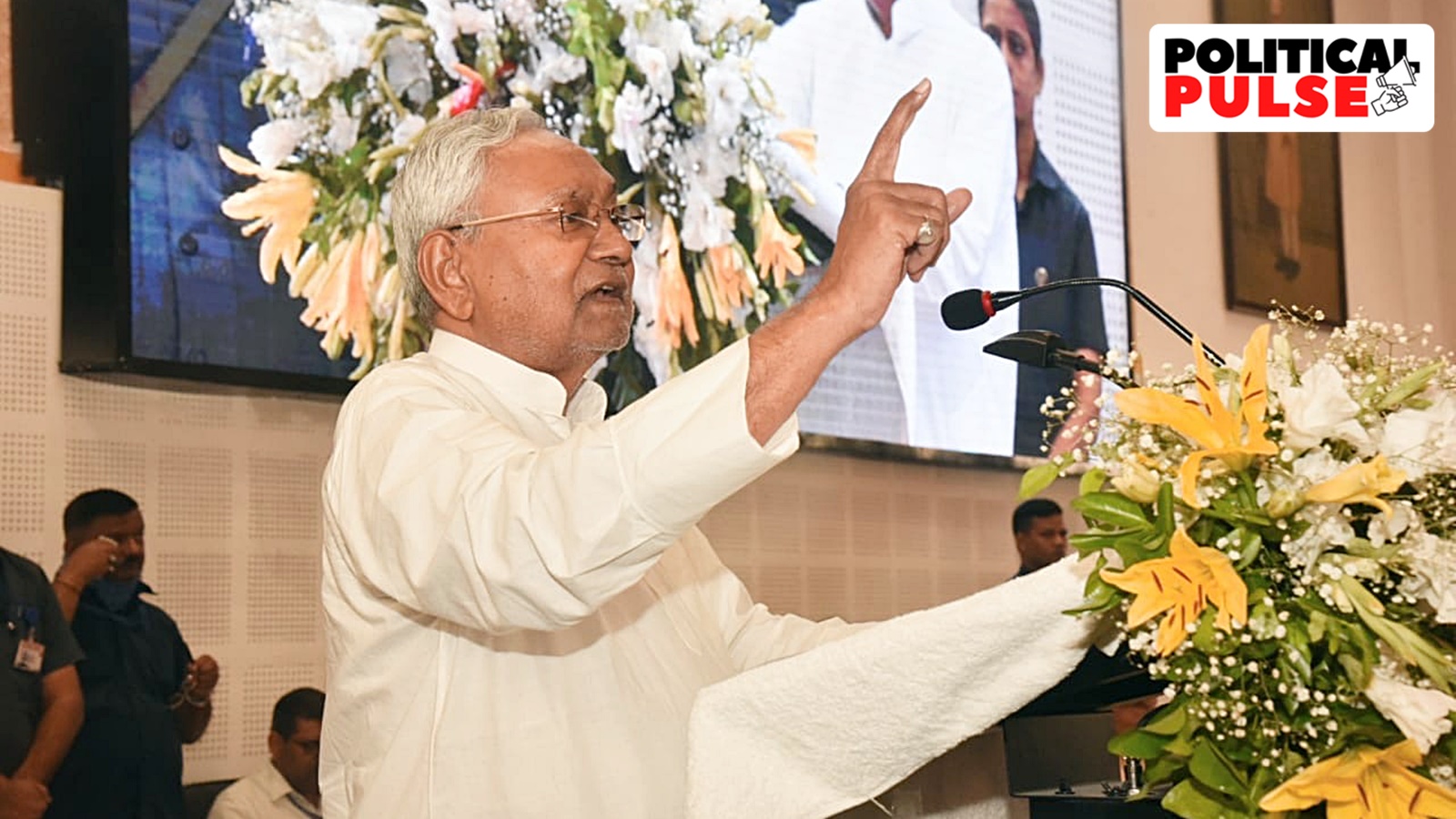Social justice politics centred on backward classes has returned to top the agenda of political parties, with the Bihar Assembly and Legislative Council now passing the Bill to hike the overall quota in educational institutions and government jobs for Scheduled Castes (SCs), Scheduled Tribes (STs), Extremely Backward Classes (EBCs) and Other Backward Classes (OBCs) from 50 per cent to 65 per cent. With the existing 10 per cent quota for Economically Weaker Sections (EWS), the effective quota in Bihar will be now 75 per cent.
The Mandal Commission report cleared by the then V P Singh-led central government in 1989 changed Indian politics, paving the way for socialists’ rule in several states, including Bihar. While socialists went on to lose steam in UP, Haryana and Karnataka, they continue to dominate in states like Bihar and Odisha.
Since 1990, Lalu Prasad, Rabri Devi and Nitish Kumar have been ruling Bihar. While RJD chief Lalu Prasad championed OBC politics, JD(U) supremo Nitish Kumar, the Bihar Chief Minister heading the Mahagathbandhan alliance, also followed suit but deviated from Lalu’s politics of backward-forward castes binary for two reasons. First, Nitish needed the BJP, which has forward castes as its core support base, to defeat Lalu. Second, he did not come from a strong caste base like Yadavs that Lalu belongs to.
Kurmis, the community Nitish has come from, make up less than three per cent of Bihar’s population as compared to Yadavs’ 14 per cent. Hence, Nitish forged a “rainbow coalition” of castes ranging from the upper castes to OBCs and EBCs, to SCs.
Even during his long years of alliance with the BJP, Nitish kept his focus on backwards, especially EBCs, and SCs. For EBCs, he modelled his politics on the Karpoori Thakur formula, which called for putting a special focus on EBCs on the ground that the benefits of reservation and various government measures were not reaching them effectively with some dominant OBC groups, such as Yadavs, Koeris, Kurmis and Banias, “cornering” most of them.

For EBCs and SCs, the Nitish government started a host of welfare schemes such as scholarship from primary classes, school uniform, free school text book, vocational training and housing and employment schemes.
One key question is, why Bihar needed a caste survey when the state government has already been running several schemes for backwards. This was aimed at not only revamping Nitish’s schemes to make their delivery to targeted backward beneficiaries more effective, but also to reboot his politics, especially after he cut out his ties with the BJP.
With the emergence of Narendra Modi at the national level, the BJP weaved its politics around Modi’s personality and his OBC background, his welfare schemes and their Hindutva agenda.
Nitish wanted to give a counter to the BJP in Bihar, which he got in the form of the caste survey. He put the Modi government on the defensive by raising the demand for a countrywide caste census. By conducting the caste survey, releasing its report — unlike states like Telangana and Karnataka, which have not done it so far despite having conducted similar surveys — and passing the new reservation bill in its light, Nitish has burnished his social justice credentials.
The Bihar caste survey immediately found national resonance with Congress leader Rahul Gandhi pitching for a caste census in his campaign for the current Assembly polls in five states. Nitish believes he has led the Opposition into setting a national narrative which has stumped the BJP for the first time in several years. While the BJP has rushed to take credit for being part of the previous Nitish-led government that opted for the caste survey, it has not spelled out its position on the growing demand for a national caste census.
Here is how Nitish is making his political play out of the numbers revealed by the caste survey report.
EBC, OBC numbers and quota hike
Nitish would often talk about how the numbers of OBC and EBC have gone up over the years. Now that the Bihar survey has shown that OBCs account for 27.12 per cent (3,54,63,936) and EBCs 36.01 per cent (4,70,80,514) of the state population, the two backward groups constitute over 63 per cent. It is from this number — Nitish said as much in the Assembly on 7 November — that he got the idea of increasing quota cap from 50 per cent to 65 per cent even if beneficiaries also include other communities. Nitish said: “As we now want to give 20 per cent quota (as against current 16 per cent) to SCs (19.65 per cent of the population), they are now fully covered and so are tribals (STs) which now get two per cent quota (as against their 1.68 per cent population)”.
The new reservation bill proposes to increase the OBC quota to 18 per cent from existing 12 per cent and the EBC reservation to 25 per cent from 18 per cent. Senior BJP leader Sushil Kumar Modi said, “As soon as numbers were out, we knew quota cap will be raised. We are always in its support.”
- Numbers of poor and homeless
Even though several enumerators told The Indian Express about people “under-reporting their income”, they noted because it was voluntary disclosure without any supporting documents.
The survey categorised 34.13 per cent (94,42,786 families) people as poor for having monthly income of less than Rs 6,000. Poverty cuts across all caste groups. While SCs top this list with 42.93 per cent (23,49,211 families) poor, it is closely followed by EBCs with 33.58 per cent (33,19,509 families) poor. Among the OBCs, 33.16 per cent (24,77,970 families) are below poverty line, while 25.09 per cent people (10,85,913 families) belonging to forward castes are poor. All of them will thus get Rs 2 lakh. Similarly, 63,840 homeless families, mostly Dalits, would get one-time Rs 1 lakh to build homes.
- Highs and lows of education
Even as the Nitish government can boast of taking Bihar’s literacy rate from 50 per cent plus in 2005 to 79.7 per cent now, several areas of concerns remain. The caste survey data may lead to some fresh policies being devised in this regard. Only 6.11 per cent people of over 13 crore Bihar population are graduates. The state has 3,92,364 engineering graduates and 74,175 MBBS doctors. 22.67 per cent people studied up to only class five and 14 per cent each up to class six and eight.
Nitish has set his eyes on education revamp by trying to fill in teachers’ vacancies. Over 1.2 lakh teachers have been recruited recently and another 1 lakh teachers would be recruited soon.The CM has also assured contract teachers about making them permanent and giving them the status of state employees.
As per education data, only 24.31 per cent SCs, 24.65 per cent EBCs and 21.68 per cent OBCs have education up to class five only. Among the SCs, there are only 18,500 engineers (0.07 per cent of their population) and 3870 (0.02 per cent) doctors. Among the OBCs, 109497 (0.31 per cent) are engineers and 22266 (0.06 per cent) doctors. Among the EBCs, there are 66390 (0.14 per cent) engineers and 14906 (0.03 per cent) doctors.
Politics of caste survey
The Nitish government has planned to run coaching centres for competitive examinations for the poor. An education department official said: “We are identifying panchayats for our focus areas to devise new policies and programmes to boost education.”
Most Read
After woman’s post about train ordeal goes viral, Railway police say taking measures to avoid such incidents
A plan to join the Red Sea with Mediterranean — an alternative to the Suez Canal
Bihar finance minister Vijay Kumar Choudhary said: “The caste survey has further paved way for inclusive growth and development with justice.” In his foreword to the 215-page Bihar Caste Based Survey Report, 2022-23, the CM stated: “We hope whatever programmes would be made on basis of caste, education and economic findings of the report would help in progress of those on margins of society and help realise our resolution of development with justice.”
State BJP president Samrat Choudhary however said: “Nitish Kumar must not forget that we had duly supported the Bihar caste survey. He had been with us for more than 13 years and the progress made in the state was also because of us being equal partners in the government. All key departments such as finance, road and health, which recorded growth, were with us. As for quota cap increase, we are on the same page.”
But another senior BJP leader conceded that the party had been surely on “the back foot with Nitish’s master stroke”. “Let us see how its message goes down to the grassroots. There is surely rancour among several communities for their numbers not being shown properly but politics of doles can easily neutralise such disagreements and still give Nitish advantage over us. But Lok Sabha elections is still sometime away,” he said.

Aisha Patel is a dedicated Indian correspondent with a deep understanding of the nation’s diverse affairs. With a background in Indian culture, politics, and current events, she provides in-depth analysis and timely reporting on domestic issues within India.



